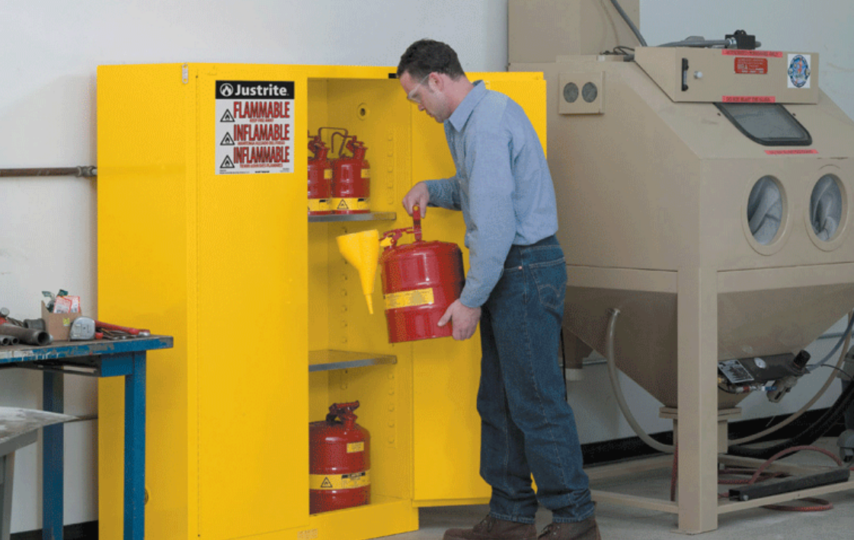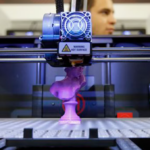In an increasingly digital world, a rack cabinet, a crucial aspect of data storage, goes beyond simply storing servers. It plays a critical role in protecting data and ensuring smooth operations. Today, we’re going to delve into the realm of rack cabinet safety and understand the key security features and considerations that make these cabinets more than mere storage solutions.
Rack cabinets are commonplace in data centers, server rooms, and other locations where vital digital equipment is stored. These cabinets serve as the initial line of defense against physical threats as well as storage. They can prevent unwanted access, guard against environmental risks, and even mitigate damage caused by unforeseen events such as fires or floods.
To begin, the locking mechanism is an important security aspect of a rack cabinet. Locks range in sophistication from simple key locks to more sophisticated systems that may include digital keypads or biometric scanners. According to the Uptime Institute’s 2022 research, a simple but secure locking mechanism can avoid roughly 75% of physical unauthorized access events.
Furthermore, the design of a rack cabinet is an often neglected yet critical security component. Cabinets with fully enclosed designs, including side panels and doors, can repel trespassers. Furthermore, the use of strong materials such as cold-rolled steel improves the physical security of a rack cabinet.
Rack cabinets can also be outfitted with cutting-edge technological solutions to improve their security. In their 2021 white paper, Integrated Technology Systems, for example, emphasized the effectiveness of introducing intrusion detection systems. If someone tries to force open the rack cabinet or get unauthorized entry, these systems alert the proper personnel.
Next, as a security component, environmental monitoring should not be disregarded. These systems can monitor temperature and even detect the presence of water, notifying personnel before conditions deteriorate to the point where the equipment stored within the rack cabinet is damaged. According to the Ponemon Institute’s 2023 research, such preemptive approaches can prevent up to 65% of data center outages caused by environmental causes.
The positioning of the rack cabinet is another security factor. This sometimes-neglected feature can have a substantial impact on security. Strategically positioning rack cabinets in areas that are easily monitored, have restricted access, or are less vulnerable to environmental concerns can provide an extra degree of security.
In addition to the security measures already mentioned, rack cabinet arrangement must be considered. Although it may appear to be a simple practical or aesthetic issue, how equipment is placed within a rack cabinet can have important ramifications for its security. Unusual hardware or signs of tampering are easy to identify in an uncluttered, well-organized rack cabinet. Furthermore, neatly arranged and well-documented wires reduce the chance of inadvertent disconnections or damage, assuring the seamless running of your equipment.
Furthermore, auditing and maintaining your rack cabinets regularly can considerably improve their security. Such tasks can aid in identifying any wear and tear that may jeopardize the cabinet’s physical integrity or locking mechanism. Regular audits can help ensure that all the equipment in the cabinet is accounted for and working properly and that no illegal adjustments have been made. While these preventative procedures may appear insignificant, they can go a long way toward preventing future security breaches.
Finally, integrating rack cabinets with other security measures is part of a comprehensive security plan. Aligning rack cabinet access control with the existing building or data center’s security system, for example, enables seamless protection. Adding video surveillance can also enable continuous monitoring and post-event analysis.
While this is by no means an exhaustive list, it does serve as a starting point for understanding the significance of security features and concerns for rack cabinets. These components are more than just storage solutions; they are critical to data security and operational continuity. The need for rack cabinet security will only rise as technology advances. The above factors demonstrate that, with careful planning and intelligent implementation, rack cabinets can provide a strong defense against a variety of dangers.
Finally, security for rack cabinets goes much beyond the hardware of the cabinet itself. The design, integration of technology, positioning, alignment with other security measures, organization, and regular audits all play important roles in guaranteeing security. Each of these aspects provides an additional layer of security, resulting in a full security shield for your vital data infrastructure. Navigating the terrain of rack cabinet safety necessitates a thorough awareness of these several factors. However, the investment of time and resources is well worth it when it assures the security of the data that is the lifeblood of your business. Rack cabinet security is thus no longer a luxury but a need in our increasingly digital society.








